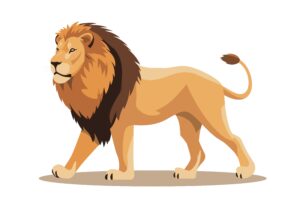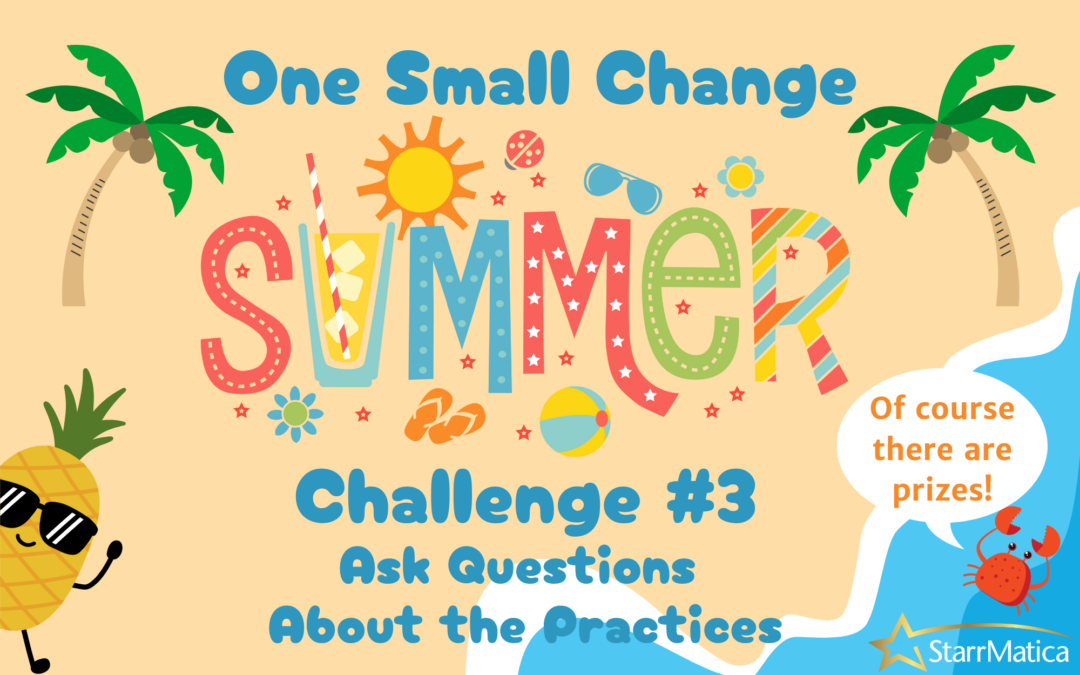New to the “One Small Change Summer Challenge?” Please read this blog post first!
You can find Challenge #1 here.
You can find Challenge #2 here.
(Reminder: You must complete all 7 challenges to be eligible for prizes on September 2nd!)
As I shared in the last post, one of the easiest ways you can get more scientific thinking into your daily routines is during reading. It doesn’t take a lot of additional time and preparation to bring some science into your reading block through read alouds. Most of you are already reading books aloud, and you are already asking your students comprehension questions about the texts. With some intentional nonfiction book selection and a few well-crafted questions, you can integrate science and reading to the benefit of your students without a lot of extra work.
In Challenge #2, I talked about nonfiction book selection. This challenge is the first of two in which we’ll explore how to craft read aloud questions that help students to consider the science in the books you read.
Part One:
Watch this short video excerpt from a longer class I offer about integrating scientific thinking and an engineering mindset into your daily classroom routine. In this video, you’ll discover how to emphasize the science and engineering practices with picture book biographies.
Note: This video was removed on September 2nd at the end of the challenge.
Part Two:
- Read a picture book biography from this list: SCIENCE AND ENGINEERING PICTURE BOOK BIOGRAPHIES
TIP: If your library doesn’t have the book you are wanting to preview, most of them can be found as read alouds on YouTube.
In addition to the texts I shared in the video, here are a few of my current favorites from the list:
The Clues Are in the Poop: The Story of Dinosaur Scientist Karen Chin by Jane Kurtz and Karen Chen – Readers are introduced to the world of paleontology by a scientist who studies coprolites – fossilied dinosaur poop!
- NGSS Curriculum Connection:
- 3-LS4-1: Analyze and interpret data from fossils to provide evidence of the organisms and the environments in which they lived long ago.
- Science Question:
- Where in the text do you see Karen conducting investigations? constructing explanations?
Lion Lights by Richard Turere and Shelly Pollock – This is the story of a boy who protected his family’s herd of cattle from lions by designing an invetion that uses moving lights. It is an excellent text for illustrating the engeinering design process.
invetion that uses moving lights. It is an excellent text for illustrating the engeinering design process.
- NGSS Curriculum Connections:
- K-ESS2-2: Construct an argument supported by evidence for how plants and animals (including humans) can change the environment to meet their needs.
- Science Question:
- Where in the text do you see Richard noticing and wondering? Where in the text do you see Richard designing solutions?
Ocean Speaks: How Marie Tharp Revealed the Ocean’s Biggest Secret by Jess Keating – Learn how Marie Tharp discovered what the ocean floor looks like.
- NGSS Curriculum Connection:
- 2-ESS2-2 Develop a model to represent the shapes and kinds of land and bodies of water in an area.
- Science Question:
- What science and engineering practices do you see in this text?
2. To qualify for the prizes on September 2nd, please visit this Facebook Post and share in the comments:
-
- What book did you choose, and how does it fit in your curriculum?
- Why are you excited to share this book? What about it speaks to you?
 Which science and engineering practice could you focus on with this text? Why?
Which science and engineering practice could you focus on with this text? Why?
This week’s challenge comes with two gifts!
Here is a one page printable that shares the meaning of each science and engineering practice for your reference. These descriptions come straight from the NSTA and more detailed information can be downloaded here.
Here are printable science and engineering practices question cards to save you time as you think about questions to ask. (Tip: Many teachers print these on cardstock, cut them apart, laminate, hold punch, and put on a ring to keep handy at the front of the classroom.)
Want extra credit?
Watch this video overview that explains the basics of the science and engineering practices:
This video is part of StarrMatica’s Virtual Science Coach “bite-sized” professional development. The library of self-paced videos, activities, podcasts, and texts includes a separate video for each practice. You can learn more about it here: https://starrmatica.com/virtualsciencecoach/
Explore mentor texts in a blog post for each practice:
- ASKING QUESTIONS AND DEFINING PROBLEMS
- DEVELOPING AND USING MODELS
- PLANNING AND CARRYING OUT INVESTIGATIONS
- ANALYZING AND INTERPRETING DATA
- USING MATHEMATICS AND COMPUTATIONAL THINKING
- CONSTRUCTING EXPLANATIONS AND DESIGNING SOLUTIONS
- ENGAGING IN ARGUMENT FROM EVIDENCE
- OBTAINING, EVALUATING, AND COMMUNICATING INFORMATION
See you next Monday!


